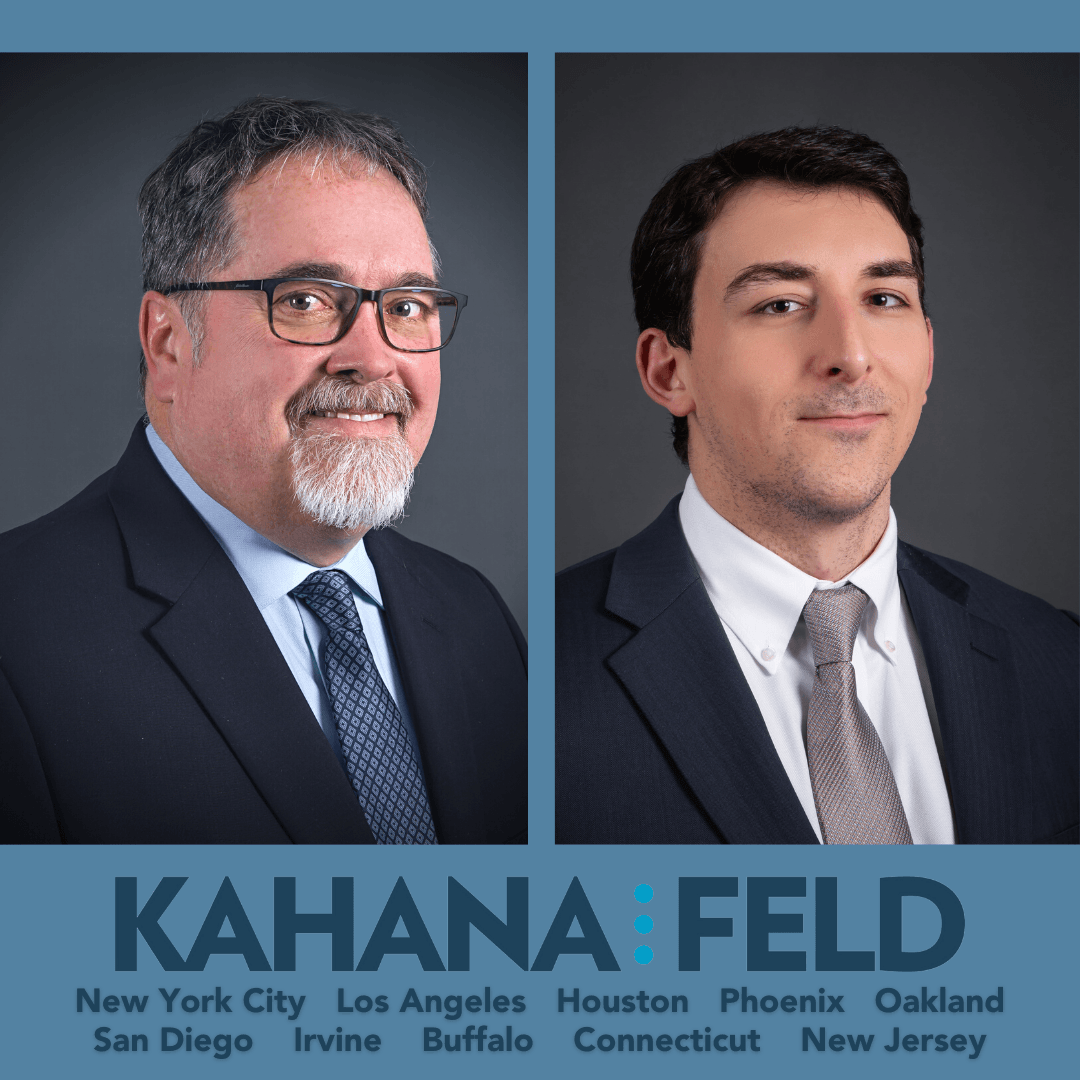Posted In National Appellate Litigation & Consulting Group
Most litigators have at least a passing familiarity with the so-called “tailored testimony rule.” In the paradigmatic civil litigation example, a party makes a damning admission at his deposition, the admission is used as the basis of his or her adversary’s summary judgment motion, and, in opposition, the party submits an affidavit that-flatly and without explanation-contradicts his or her deposition testimony. The party’s attorney then claims that the two contradictory versions of the party’s story creates a credibility issue that must be resolved by a jury, which, the argument goes, is entitled to believe the second version of the story and reject the first. Facially, this argument is plausible, because juries are, in fact, afforded broad discretion to weigh and credit testimony. [i]
Under the tailored testimony rule, however, the court will grant summary judgment anyway. The law-and thus the court-reasons that because the second version of the story has been “tailored to avoid the consequence of” the prior admission, it presents only a “feigned issue of fact,” and can be safely rejected as a matter of law.[ii] This rule stems from several intertwined commonsense concepts, recognizing that the story has been changed to avoid the negative legal consequences arising from the original version, and that “[a] witness’s recollection does not generally improve with age, but becomes less vivid.”[iii]
The rule is also to some degree underpinned by elements of judicial estoppel, which forbids parties from taking position that make a mockery of the court and its truth-seeking function.[iv] It is, finally, the logical fruit of the twin purposes of discovery: “the ascertainment of truth at trial and the prompt disposition of actions.”[v] Permitting a party to cast a cloud of artificial uncertainty over an inconveniently-disclosed truth to avoid prompt disposition obviously undermines both of these purposes.
Notably, the rule only applies where the uncertainty is, in fact, artificial. That is, it applies to reversals that are either unaccompanied by “any explanation accounting for the disparity”[vi] or accompanied by an explanation that is, on its face, not credible. As the Seventh Circuit, which follows a similar rule, has explained, the revised story should be disregarded “unless it is demonstrable that the statement in the [earlier] deposition was mistaken, perhaps because the question was phrased in a confusing manner or because a lapse of memory is in the circumstances a plausible explanation for the discrepancy.”[vii]
In the absence of such a plausible explanation, all indicia favor the earlier, nearer-in-memory, and less-self-interested account: a fact-finder picking between the two tales told by the same teller would have to engage in speculation to invent a justification or excuse in order to prefer the second, later and more self-serving, account. Speculation, of course, is not evidence and cannot be considered on a summary judgment motion.[viii]
While the “classic” example of the rule is the simplest, the tailored testimony rule has broader applications as well, such as when a party supplies a detail in a deposition that does not appear to be a damning admission, but that contradicts his or her theory or defense of the case in a more nuanced or removed (though still material) way. For example, a plaintiff in a roadway accident case may claim to clearly remember certain features of the roadway and that these features contributed to the accident, then, when contemporaneous photographs prove that no such feature existed, or when defendant’s expert proves plaintiff’s version of events is physically impossible, provide an affidavit setting out a new and contradictory narrative of how the accident occurred. This, too, is tailored testimony: factual investigation has revealed the original story to be fabricated, and the fabricator, caught in a lie, has simply substituted a second lie that is carefully tailored to the result of the investigation in an effort to “thread the needle” and impose liability despite the debunking of the original falsehood.
As such, the tailored testimony doctrine classes a particular type of testimonial evidence as inherently lacking weight. This is, in truth, a credibility determination: the convenient and unexplained changed story is, as the law and the courts recognize, nonsense, and thus not to be considered as credible evidence. This, however, jars with the general rule that credibility is to be determined by juries, not judges.
To resolve this tension, the law invokes two justifications for judicial foray into this arena. In many instances, the law-as a matter of legal fiction-holds that the tailored testimony rule does not involve a credibility determination at all. Instead, it treats the rule as arising as a function of the burden-shifting analysis inherent in summary judgment motions. A party that moves for summary judgment bears the prima facie burden of eliminating material triable issues of fact, whereupon the burden shifts to the party opposing summary judgment to identify evidence that raises an issue of fact.[ix]
In order to maintain the fiction that the tailored testimony rule does not involve judges assessing credibility, the courts simply hold that the tailored testimony was insufficient to carry this shifted burden, and that the tailored testimony “lacks evidentiary value.”[x] But make no mistake: this is, in fact, a determination that the tailored testimony cannot be credited, simply camouflaged through the extra step of saying it is not sufficiently credible to carry the shifted burden.
The second overlapping justification for judicial foray holds that the courts may reject testimony as incredible as a matter law. This includes instances where the testimony is “so inherently improbable that the court is morally certain it is not true”[xi], or where it is “impossible of belief because it is manifestly untrue, physically impossible, contrary to experience, or self-contradictory”[xii], or where “untruths are clearly apparent.”[xiii] Courts have even held that evidence insufficient to convince a reasonable mind amounts, in law, to no evidence.[xiv] This justification is simply an extension of the axiom that the purpose of litigation is a search for truth.[xv]
These justifications apply just as much in situations outside the “classic” tailored testimony scenario. Indeed, the same logical justifications-burden-shifting and inherent implausibility-are why a party to a contract cannot escape summary judgment in an action on that contract simply by claiming his signature has been forged.[xvi] Equally, inherent implausibility or incredibility-for example, the testimony of a person who has lied about an incontrovertible fact, can warrant a court rejecting the entirety of that person’s testimony under the maxim falsus in uno, falsus in omnibus.[xvii]
Courts are sometimes reluctant to deploy their power to deem testimony incredible as a matter of law. Yet they possess this power and should wield it where appropriate, and have begun to do so with greater frequency. This includes, for example, rejecting or disregarding testimony that is plainly contrary to unambiguous and incontrovertible evidence, such as video, climatological, and black box evidence-and rightly so.[xviii]
As such, there is no impediment to a still-broader application, such as where the “original version” of a party’s story is provided at an earlier time than the witness’ deposition, e.g., at an accident scene, to hospital personnel, to investigating officers, in formal settings such as in the course of 50-H testimony or even verified pleadings. The witness at their first deposition may already be aware of the negative legal repercussions of their “original” story, and may seek to reverse position on a fact of facts of from their earlier version to avoid them.
While, in our experience, motion courts are sometimes reluctant to apply the tailored testimony rule outside of the “classic” situation, these occasions present an even stronger case for its application. Indeed, as a matter of fundamental fairness, it makes no sense to treat tailored testimony differently at different stages of litigation-a lie is a lie is a lie, and the evidentiary value of a transparent lie does not vary with the context that occasioned it.[xix]
Moreover, a broader across-the-board application of the tailored testimony rule also comports with the systemic efficiencies desperately needed by the courts and litigants as we approach the post-COVID-19 era. Unclogging the system from meritless claims and defenses allows a respite to overworked, underfunded and backlogged court personnel, while simultaneously creating greater access to justice to deserving civil litigants.[xx]
Even before the arrival of COVID-19, New York’s appellate courts were encouraging greater efficiencies by directing motion courts away from the former practice of “rubberstamp” denials of summary judgment, and toward granting summary judgment and even partial summary judgment with more frequency.[xxi]
Again, litigation is a search for truth, and the function of evidentiary rules is to serve as “sacred guardian” to that truth-finding function.[xxii] At its heart, the tailored testimony rule forbids the perversion of evidentiary rules to subvert, rather than guide, the sacred truth-finding function by falsely treating transparent lies as possible truths. Allowing litigants to reverse or revise themselves, without explanation, and without penalty in fact undermines the search for truth and turns litigation into mere sport. This practice cannot be without consequence in a society with ever-diminishing trust in its social institutions.[xxiii]
In The Santissima Trinidad, Justice Story explained that the judiciary need not entertain the possibility of crediting an account that displays “gross insensibility to the difference between right and wrong, between truth and falsehood.” 20 U.S.283, 338-39 (1822) (Story, J.). Justice Story was right then and remains right today. The courts should cease to indulge these lies and start to more-sharply penalize those who indulge in “the cancerous practice of lying to the courts.”[xxiv]
Initially published by NYLJ
ENDNOTES:
[i] See, e.g., Cordice v. New York City Transit Auth ., 171 A.D.3d 854, 856 (2d Dept. 2019).
[ii] See, e.g., Luna v. CEC Entertainment, Inc., 159 A.D.3d 445, 446 (1st Dept. 2018); Miller v. City of New York, 214 A.D.2d 657 (2d Dept. 1995); Prunty v. Keltie’s Bum Steer, 163 A.D.2d 595 (2d Dept. 1990); Leale v. New York City Health & Hospitals Corp., 222 A.D.2d 414 (2d Dept. 1995).
[iii] Gregware v. City of New York, 132 A.D.3d 51, 62 (1st Dept. 2015).
[iv] Karasik v. Bird, 104 A.D.2d 758, 758-759 (1st Dept. 1984); Estate of Shefner v. Beraudiere, 127 A.D.3d 442, 442 (1st Dept. 2015).
[v] M. Farbman & Sons, Inc. v. New York City Health & Hosps., Corp., 62 N.Y.2d 75, 80 (1984).
[vi] Telfeyan v. City of New York, 40 A.D.3d 372, 373 (1st Dept. 2007).
[vii] Pourghoraishi v. Flying J, Inc., 449 F.3d 751, 759 (7th Cir. 2006) (citations and quotations omitted).
[viii] Zuckerman v. City of New York, 49 N.Y.2d 557, 563 (1980).
[ix] See Gilbert Frank Corp. v. Fed. Ins. Co., 70 N.Y.2d 966, 967 (1988); Zuckerman, 49 N.Y.2d at 562.
[x] Blackmon v. Dinstuhl, 27 A.D.3d 241, 242 (1st Dept. 2006); see Addo v. Melnick, 61 A.D.3d 453 (1st Dept. 2009); Concepcion v. Walsh, 38 A.D.3d 317, 318 (1st Dept. 2007); Moorhouse v. Standard, New York, 124 A.D.3d 1, 10 (1st Dept. 2014); Phillips v. Bronx Lebanon Hosp., 268 A.D.2d 318, 320 (1st Dept. 2000).
[xi] Allen v. Black, 275 A.D.2d 207, 210 (1st Dept. 2000) (“As we said in De Mayo v. Yates Realty Corp. (35 AD2d 700, 701, affd 28 NY2d 894), ‘We are not required to give credence to testimony so inherently improbable that we are morally certain it is not true.'”); Bottalico v. City of New York, 281 App. Div. 339, 341 (1st Dept. 1953); Marti v. New York City Hous. Auth., 192 A.D.2d 443, 444 (1st Dept. 1993); Annunziata v. Colasanti, 126 A.D.2d 75, 80 (1st Dept. 1987); Jarrett v. Madifari, 67 A.D.2d 396, 402 (1st Dept. 1979).
[xii] Jeanotte v. City of Rochester Police Dept., 110 A.D.2d 1081 (4th Dept. 1985); Simmons v. MDA Contracting Inc., 136 A.D.3d 517, 518 (1st Dept. 2016), quoting Loughlin v. City of New York, 186 A.D.2d 176, 177 (2d Dept. 1992), lv. denied 81 N.Y.2d 704 (1993).
[xiii] Krupp v. Aetna Life & Cas. Co., 103 A.D.2d 252 (2d Dept. 1984); Matter of Carl W., 174 A.D.2d 678, 680 (2d Dept. 1991); Annunziata v. Colasanti, 126 A.D.2d 75, 79 (1st Dept. 1987); Sankin v. Ford Motor Co., 36 A.D.2d 772, 773 (2d Dept. 1971); Espinal v. Trezechahn 1065 Ave. of Americas, LLC, 94 A.D.3d 611, 613 (1st Dept. 2012); Bank of New York v. 125-127 Allen St. Associates, 59 A.D.3d 220 (1st Dept. 2009); Cillo v. Resjefal Corp., 16 A.D.3d 339, 341 (1st Dept. 2005); Rosario v. Sebco I. Associates, L.P., 305 A.D.2d 307 (1st Dept. 2003); Pinto v. Selinger Ice Cream Corp., 47 A.D.3d 496, 497 (1st Dept. 2008); Marti v. New York City Hous. Auth., 192 A.D.2d 443, 444 (1st Dept. 1993); Dorazio v. Delbene, 37 A.D.3d 645, 646 (2d Dept. 2007); Huggins v. Figueroa, 305 A.D.2d 460, 461 (2d Dept. 2003).
[xiv] Blum v. Fresh Grown Preserve Corp., 292 N.Y. 241, 246 (1944).
[xv] See, e.g., Finn v. Morgan, 46 A.D.2d 229, 234 (4th Dept. 1974).
[xvi] A party wishing to raise an issue of fact as to whether a signature is bona fide must identify cognizable evidence that it is not bona fide-a simple denial will not do. See Kitovas v. Megaris, 133 A.D.3d 720, 721-22 (2d Dept. 2015) (defendant in an action on a promissory note raised a triable issue of fact by submitting not only his affidavit asserting that his signature on said note was forged, but samples of his signature and an affidavit from the individual who supposedly witnessed the note’s execution, denying having done so). Any other rule would allow those who default on their contracts to force the victims of their default into expensive trials on their own mere say-so.
[xvii] The Santissima Trinidad, 20 U.S.283, 338-39 (1822) (Story, J.) (“where the party speaks to a fact in respect to which he cannot be presumed liable to mistake, as in relation to the country of his birth, or his being in a vessel on a particular voyage, or living in a particular place, if the fact turn out otherwise, it is extremely difficult to exempt him from the charge of deliberate falsehood; and Courts of justice, under such circumstances, are bound, upon principles of law, and morality and justice, to apply the maxim falsus in uno, falsus in omnibus.”)
[xviii] See, e.g., Fernandez v. Ortiz, 183 A.D.3d 443 (1st Dept. 2020) (“Ortiz’s belief that plaintiff suddenly entered the roadway from the sidewalk near the parked cars, giving him no time to avoid hitting plaintiff, is speculative and contradicted by the video footage . . . [f]urthermore, Ortiz’s statement that he did not see the bicycle with any reflective equipment is insufficient to raise triable issues of fact. The statement is contradicted by the video and, in any event, relates to the issue of plaintiff’s comparative negligence “).
Fernandez, was, of course, a civil case and involved summary judgment burden-shifting, and so the R. Kelly or “Shaggy defense” strategy of denying that a video shows what it shows may remain viable in criminal proceedings. See Preston v. Morton, 4:09CV00030, 2010 U.S. Dist. LEXIS 50784, *6 (W. D. Va. May 24, 2010) (explaining that the “Shaggy defense” “refers to a song by the artist Shaggy called ‘It Wasn’t Me.’ In the song, a man’s girlfriend catches him ‘red-handed’ in the arms of another paramour. When asked for his advice, the singer advises the man to tell her ‘it wasn’t you”); see also Connection Distrib. Co. v. Holder, 557 F.3d 321, 353 n. 6 (6th Cir. 2009) (noting the “success of the ‘Shaggy defense'” in “the trial of Robert Kelly”).
While “It Wasn’t Me” was intended as satirical entertainment – “part of the song’s ‘charm’ is the absurdity of such a claim by someone in the narrator’s situation” ( Preston, 2010 U.S. Dist. LEXIS 50784 at *6) – a cultural habit of humoring absurd denials of incontrovertible facts can have troubling implications when the practice metastasizes to the courts. Mr. Kelly, of course, was indicted in 2019 for multiple counts of further abuse of minors, kidnapping, and production of child pornography, some of which allegedly occurred after he was found not guilty through the successful use of the “Shaggy defense.” Then, too, there are broader implications. See Maegan Vasquez, “NYT: Trump questions authenticity of ‘Access Hollywood’ tape,” Nov. 27, 2017, available at https://www.cnn.com/2017/11/27/politics/access-hollywood-nyt-denial/index.html.
[xix] Its application should also be equally available at the CPLR 4401 stage during trial and 4404 stage post-trial. No logic or rationale exists to suggest otherwise that we are aware of to limit the rule.
[xx] “In the final analysis, there is absolutely no reason to allow this unprovable case to proceed to trial. **** Plaintiff was not and is not able to make out a prima facie case. Thus, the better approach here is to dismiss the instant matter now, before more time and resources are wasted. As the Court of Appeals has said, albeit in a different context: ‘Summary judgment is designed to expedite all civil cases by eliminating from the Trial Calendar claims which can properly be resolved as a matter of law. Since it deprives the litigant of his day in court it is considered a drastic remedy which should only be employed when there is no doubt as to the absence of triable issues. But when there is no genuine issue to be resolved at trial, the case should be summarily decided, and an unfounded reluctance to employ the remedy will only serve to swell the Trial Calendar and thus deny to other litigants the right to have their claims promptly adjudicated.’ Andre v. Pomeroy, 35 N.Y.2d 361, 364 (1974) (citations omitted).” Bobby D. Associates v. Ohlson, 24 Misc. 3d 1239(A) (Civ. Ct. 2009).
[xxi] Carlos Rodriguez v. City of New York, 31 N.Y.3d 312 (2018); see also ” What Really Happened in ‘Carlos Rodriguez v. City of New York?” (T. Capowski & J. Shaub, NYLJ, Outside Counsel, Sept. 14, 2018).
[xxii] People v. Blades, 93 N.Y.2d 166, 177 (1999) (holding that while trial court had erred in admitting allocution statements of alleged burglar’s literal partner in crime, error was harmless given the “overwhelming evidence of guilt” due in large part to “defendant’s comical, virtually caught red-handed act of discarding evidence at every step and turn away from the crime scene”). In other words, while the rules of evidence had not been properly observed, their sacred purpose-the finding of truth-had been fulfilled, and no further proceeding was required.
[xxiii] Gallup has polled confidence in American institutions annually since 1973 (available at https://news.gallup.com/poll/1597/confidence-institutions.aspx). Civil courts in general are not among the institutions in the survey, but as of 2019, the share of Americans who had either “a great deal” or “quite a lot” of confidence in the Supreme Court was 38%, and the share with the same levels of confidence in the criminal justice system was 24%. Neither are all-time lows – the criminal justice system was at 15% in 1994, likely due to certain high-profile proceedings – but both are far from the all-time highs, which were 56% for the Supreme Court (in 1985) and 34% for the criminal justice system (in 2004). These relatively low levels are sadly part of a broader trend that has seen steep declines in confidence in organized religion, public schools, newspapers and television news, banks, the medical system, Congress, and the Presidency.
[xxiv] Bank of Am. v. Lavelle, 703663/2015, 2018 N.Y. Misc. LEXIS 1837, *1-2 (Sup. Ct. Queens Co., Apr. 19, 2018) (“the Court notes that the defendant’s claim that she re did not receive any notice of the foreclosure is demonstrably untrue…[c]urrently, too many litigants and their counsel indulge in fictional narratives, even when their concocted claims are betrayed by evidence…[t]he courts must stop this practice of condoning seemingly tailored testimony and perjured narratives”).




